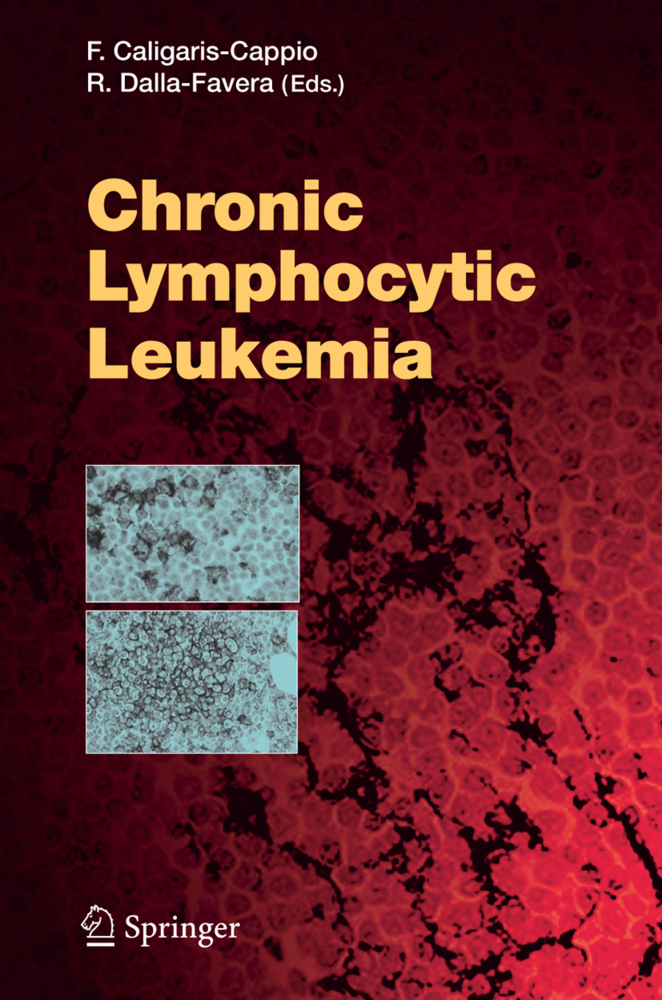Acute Promyelitic Leukemia
Molecular Genetics, Mouse Models and Targeted Therapy
Over the past 10 years, work on acute promyelocytic leukemia (APL) has become the paradigm of translational research that began with the discovery of a recurrent chromosomal translocation, followed by the identification of the genes and proteins involved, finding their molecular functions in transcriptional control, establishing mouse models and culminating in the development of targeted therapy.
1;List of Contents;5 2;List of Contributors;7 3;APL as a Paradigm in Biomedical Research: A Journey Toward the Cure;8 4;Mouse Models of Acute Promyelocytic Leukemia;10 4.1;1 Models;11 4.2;2 Cooperating Events;18 4.3;3 Pathogenesis, Conclusions;21 4.4;4 Immune Modulation of APL;22 4.5;5 Therapies;23 4.6;6 Arsenic Trioxide;25 4.7;7 Histone Deacetylase Inhibitors;29 4.8;8 Additional Investigational Therapies;30 4.9;9 Therapy, Conclusions;31 4.10;10 Perspectives;31 4.11;References;32 5;The PLZF Gene of t(11;17)-Associated APL;38 5.1;Summary;49 5.2;References;49 6;SUMO, the Three Rs and Cancer;56 6.1;1 Introduction;56 6.2;2 At the Chromosomal Level;58 6.3;3 DNA Replication and Repair;64 6.4;4 SUMO and Cancer: Caretakers and Gatekeepers;66 6.5;5 Conclusion;70 6.6;References;71 7;Emerging Role for MicroRNAs in Acute Promyelocytic Leukemia;80 7.1;1 Introduction;81 7.2;2 microRNAs;82 7.3;3 microRNAs and Hematopoietic Lineage Specificity;84 7.4;4 Regulation of miR-223 Expression Levels in Acute Promyelocytic Leukemia;85 7.5;5 C/EBPa and NFI- A;86 7.6;6 miR-223 Upstream Region;88 7.7;7 Concluding Remarks;89 7.8;References;90 8;The Theory of APL Revisited;92 8.1;1 Introduction;93 8.2;2 The Fusion Proteins of APL Are Oncogenes of the Early Myeloid Hematopoietic Compartment;94 8.3;3 X-RARa Proteins Are Necessary but Not Sufficient to Cause Leukemia and Represent Biologically Distinct RARa Mutants;95 8.4;4 RARa- X Proteins Do Play a Critical Role in APL Leukemogenesis, but Are Not Sufficient for Full- Blown Transformation;95 8.5;5 Multiple Genetic Hits in APL Pathogenesis;96 8.6;6 XMolecules Are Involved in the Control of the Cell Mitogenic and Survival Signals, and of Genomic Stability;97 8.7;7 The Crosstalk Between X and RAR/RXR Pathways;98 8.8;8 X Haploinsufficiency and Functional Interference of X-RARa and RARa- X with X- Regulated Pathways Is Critical for APL Leukemogenesis;99 8.9;9 The X Moiety Lends to the X-RARa Fusion Protein Distinct Gain- of- Function Proteins;100 8.10;10 Conclusions and Future Directions;100 8.11;References;103 9;Treatment of Acute Promyelocytic Leukemia by Retinoids;108 9.1;1 Background: Results of Chemotherapy Alone in APL;110 9.2;2 First Results Obtained with ATRA Alone in APL;112 9.3;3 ATRA Combined to Intensive Chemotherapy in Newly Diagnosed APL;113 9.4;4 Consolidation and Maintenance Treatment with ATRA in APL;114 9.5;5 Prognostic Factors in Patients Treated with ATRA and Chemotherapy;115 9.6;6 Unresolved Issues in the ATRA and Chemotherapy Combination Treatment of Newly Diagnosed APL;118 9.7;7 Role of Retinoids in the Treatment of Relapsing APL;120 9.8;8 APL Differentiation Syndrome (ATRA Syndrome) and Other Side Effects of ATRA;121 9.9;References;125 10;Arsenic Trioxide and Acute Promyelocytic Leukemia: Clinical and Biological;136 10.1;1 As2O3 as Single Treatment in Remission Induction;137 10.2;2 Dosage and Pharmacokinetics;137 10.3;3 As2O3 as Combined Treatment with ATRA in Remission Induction;140 10.4;4 Adverse Effects;141 10.5;5 Postremission Treatment and Survival Time;142 10.6;6 Molecular Mechanisms of Arsenic Action;143 10.7;7 Perspectives;146 10.8;References;147 11;Front Line Clinical Trials and Minimal Residual Disease Monitoring in Acute Promyelocytic Leukemia;152 11.1;1 Diagnostic Approach;153 11.2;2 Molecular Architecture of the t(15;17) and Definition of the RT- PCR Strategy;154 11.3;3 Technical Issues Related to RT-PCR Amplification;155 11.4;4 Strategies to Improve RT-PCR Monitoring and Quantitative Real- Time RT- PCR;156 11.5;5 Front-Line Therapy;157 11.6;References;160 12;Histone Deacetylase Inhibitors in APL and Beyond;164 12.1;1 Cancer Epigenetics and Histone Acetylation;165 12.2;2 The Histone Deacetylase Family;168 12.3;3 Histone Deacetylase Inhibitors;174 12.4;4 Future Directions;184 12.5;References;189 13;Monoclonal Antibody Therapy of APL;212 13.1;1 Introduction;212 13.2;2 Background;213 13.3;3 Therapies;216 13.4;4 Conclusion;221 13.5;References;222 14;Targeting APL Fusion Proteins b
Pandolfi, Pier Paolo
Vogt, Peter K.
| ISBN | 9783540345947 |
|---|---|
| Artikelnummer | 9783540345947 |
| Medientyp | E-Book - PDF |
| Copyrightjahr | 2007 |
| Verlag | Springer-Verlag |
| Umfang | 274 Seiten |
| Sprache | Englisch |
| Kopierschutz | Digitales Wasserzeichen |











